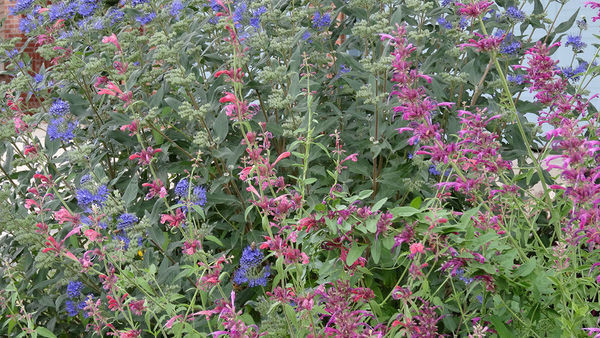
Dan Johnson is a bit of a horticulture god in our world. Dan splits his time between Denver, Colorado, and Tucson, Arizona. In Denver, he works as the curator of native plant collections and the associate director of horticulture for the Denver Botanic Gardens. He also has a home in Tucson, where he spends some of the year. Dan has created two amazing gardens at both his high and low desert homes, utilizing mostly native plants while still pushing the envelope on others.

We asked Dan about some of the biggest design challenges he faced between his Denver and Tucson gardens. Dan explained that both gardens were “essentially flat, blank slates except for a mature tree here and there.” This allowed Dan to determine where he might want to change elevations and place larger specimens instead of smaller, more intimate plantings.

The next challenge, Dan explained, was understanding and altering the microclimates. He said that this can take a full season of careful observation to really understand how the space is affected by the sun, shade, moisture, cold, etc. This is a process that we have been going through ourselves, as we are just reaching a year in our own home. Dan is right; to fully understand your unique space is truly a learning experience that takes patience. Dan was also challenged with the primarily “new-to-me plant palette.” He explained to us that he really wanted his Tucson garden to be different from his Denver garden. So with the exception of four or five plants, he used desert or desert-adapted species in Tucson that he otherwise couldn’t use in Denver.

When we asked Dan about any plants that he has or has not been able to grow in the low desert, he said there were a few surprises. He mentioned that shortly after moving here, the Tucson winter lows reached down to 18˚F, which did some real damage. Luckily, a lot of the plants recovered, but there were some younger tropicals that didn’t survive the cold. With Tucson averaging in the low 40s in the winter, you can imagine the damage that such a dramatic drop in temperature can do.

Dan also explained the importance of having some “canopy plants” in his space and how the shelter of high, branching trees like his blue palo verde (Parkinsonia florida, Zones 9–11) and velvet mesquite (Prosopis velutina, Zones 9–11) can really make a world of difference in both the cold and the heat. His Tucson gardens are filled with “hundreds of desert plants, cacti, succulents, desert- adapted palms, and some citrus.” This is quite different from his Denver gardens, which are home to “conifers, hundreds of herbaceous perennials, vines, bulbs, yuccas, and some hardy cacti as accents.”

As Denver-gardeners-turned-Tucsonans, we were quite drawn to Dan’s immense knowledge and use of plants in both his Denver and Tucson gardens. Dan was more than willing to share his passion for plants with us and to take us on a virtual tour of both gardens. We hope you enjoyed this glimpse into Dan’s gardens as much as we did.
Sheila Schultz and Laurel Startzel are a mother-daughter duo who founded Denver Dirty Girls Container Gardening while living in Denver, Colorado and have continued their business since moving to Tucson, Arizona.


















Comments
Log in or create an account to post a comment.
Sign up Log in